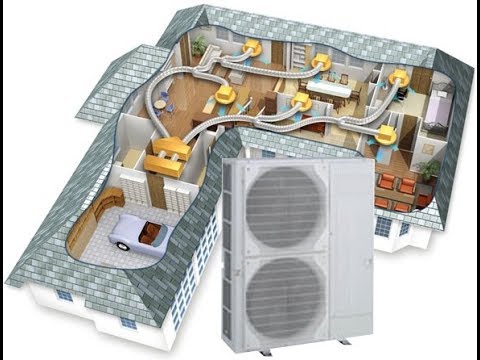
Ducted Heat Pumps – Everything to Know
Ducted heat pumps are transforming home climate control. Discover the essential details about these systems, from how they work to their benefits, types, price, and installation considerations. Ultimately, you can decide whether a ducted heat pump suits your home. Let’s dive into the world of efficient and comfortable heating and cooling.
What are Ducted Heat Pumps?
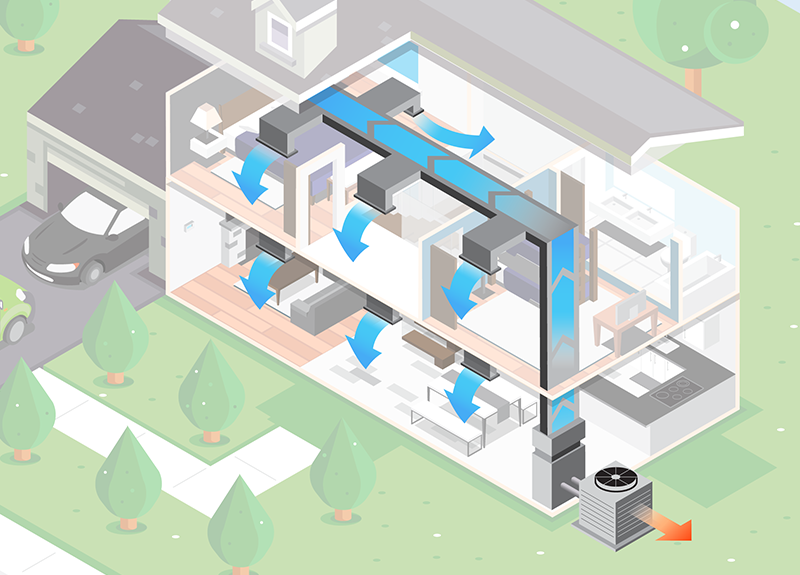
Ducted heat pumps, or central or whole-house heat pumps, are advanced HVAC (Heating, Ventilation, and Air Conditioning) systems designed to provide heating and cooling for your entire home.
Unlike traditional heating and cooling systems, which depend on distinct systems, ducted heat pumps combine these functions into one streamlined and efficient design.
At their core, ducted heat pumps work on the principle of transferring heat energy between the inside and outside of your home.
Components of Ducted Heat Pumps
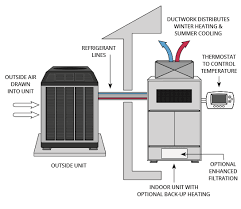
Ducted heat pumps consist of three main components:
1. Outdoor Unit: The outdoor unit of a ducted heat pump houses a compressor, a fan, and a coil. It is responsible for extracting heat from the outdoor air during the heating season and expelling heat outdoors during the cooling season.
2. Indoor Unit: Inside your home, a central indoor unit is connected to a network of ducts that run throughout the building. This indoor unit contains an evaporator coil and a fan. During the heating season, it takes the heat absorbed from the outdoor air and distributes it throughout your home via the ductwork. Conversely, during the cooling season, it removes heat from indoor air and releases it outside.
3. Thermostat and Controls: A central thermostat allows you to set and control the desired temperature for your home. Advanced controls enable you to customize heating and cooling schedules, zones, and other settings for maximum comfort and energy efficiency.
The magic of ducted heat pumps lies in their ability to move heat rather than generate it efficiently. This makes them highly energy-efficient, capable of providing consistent comfort year-round, and environmentally friendly compared to traditional heating and cooling systems.
Benefits of Ducted Heat Pumps

Ducted heat pumps offer many advantages, making them a compelling home heating and cooling choice. Whether you want to increase your comfort, save on energy bills, or reduce your environmental footprint, ducted heat pumps have you covered. Here are some key benefits:
1. Year-Round Comfort: Ducted heat pumps provide heating and cooling capabilities from a single system. This implies that you can experience constant comfort within your home throughout all seasons, regardless of the external weather conditions.
2. Energy Efficiency: One of the crucial advantages of ducted heat pumps is their high energy efficiency. Instead of generating heat, they transfer it, making them up to three times more energy-efficient than traditional heating systems. This efficiency can result in substantial savings on your energy bills.
3. Zoning Options: Ducted systems can be designed with zoning capabilities, allowing you to independently control the temperature in different areas or rooms of your home. This enhances comfort and minimizes energy wastage by heating or cooling only the spaces in use.
4. Quiet Operation: Ducted heat pumps are known for their quiet operation, making them unobtrusive in your living spaces. The noise from the system’s outdoor unit is typically minimal, and the indoor unit is strategically located to minimize sound disruption.
5. Improved Air Quality: The air filtration systems in ducted heat pumps help improve indoor air quality by trapping dust, allergens, and pollutants.
6. Space-Saving Design: Ducted systems are discreet and space-saving. They eliminate the need for bulky, visible heating and cooling equipment in each room, preserving the aesthetics of your living spaces.
7. Environmentally Friendly: Ducted heat pumps are environmentally friendly because they use electricity for heat transfer rather than burning fossil fuels. This decreases greenhouse gas emissions, actively supporting efforts to combat climate change.
8. Smart Control Options: Many modern ducted heat pumps have smart control features, allowing you to manage your system remotely through smartphone apps or integrate it into home automation systems. This level of control can enhance convenience and energy savings.
9. Long Lifespan: Properly maintained ducted heat pumps have a longer lifespan than other HVAC systems. With regular servicing, they can serve your home for 15 years or more.
10. Home Value: Installing a ducted heat pump system will add value to your home, enhancing its appeal to prospective buyers when the time comes to sell.
How Do Ducted Heat Pumps Work?
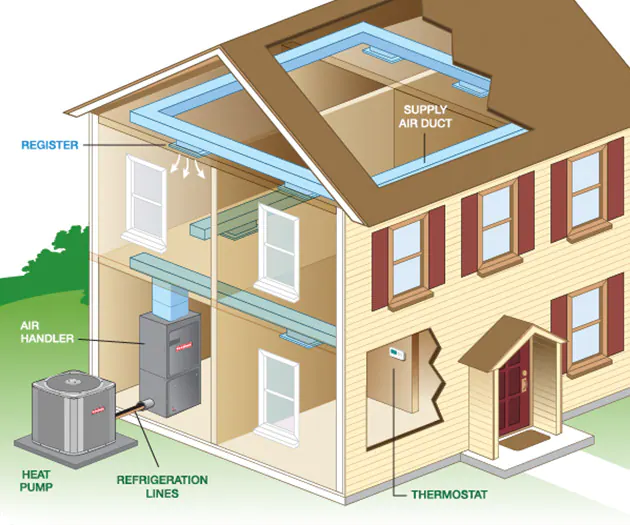
Understanding the inner workings of ducted heat pumps is crucial to appreciating their efficiency and versatility. These systems operate based on heat transfer, refrigeration, and air distribution principles. Here’s a step-by-step breakdown of how ducted heat pumps work:
Heat Extraction:
During the winter months, when you need heating, the heat pump’s outdoor unit extracts heat energy from the ambient outdoor air, even in cold conditions. It does this by circulating a refrigerant through a coil, which absorbs heat from the air.
Refrigeration Cycle:
The heat absorbed by the refrigerant in the outdoor unit causes it to vaporize. The compressor then pressurizes this vaporized refrigerant, significantly raising its temperature. This high-temperature, high-pressure gas is pumped to the indoor unit through insulated copper pipes.
Indoor Heat Distribution:
Inside your home, the indoor unit takes over. The hot, pressurized refrigerant flows through an evaporator coil, releasing the captured heat and warming the air that passes over the coil. The now-cooled refrigerant returns to a liquid state.
Air Distribution:
A network of ducts carries the heated air to various rooms and spaces in your home. Each room can have its own supply and return ducts, allowing for precise temperature control and zoning.
Thermostat Control:
A central thermostat, connected to the indoor unit, continuously monitors the indoor temperature and adjusts the heat pump’s operation to maintain your desired comfort level. You can program the thermostat to create heating schedules and set different temperatures for different zones, optimizing energy use.
Cooling Mode:
During the summer, the heat pump can reverse its operation. It extracts heat from indoor air, transferring it to the outdoor unit, effectively cooling your home. This dual-functionality eliminates the need for a separate air conditioner.
Ducted heat pumps are efficient because they move heat rather than generate it.
In contrast to conventional heating systems such as furnaces or electric resistance heaters, which generate heat through combustion or electrical resistance, heat pumps can achieve energy efficiency levels up to three times higher.
This energy efficiency can significantly save costs while reducing your carbon footprint.
Types of Ducted Heat Pumps
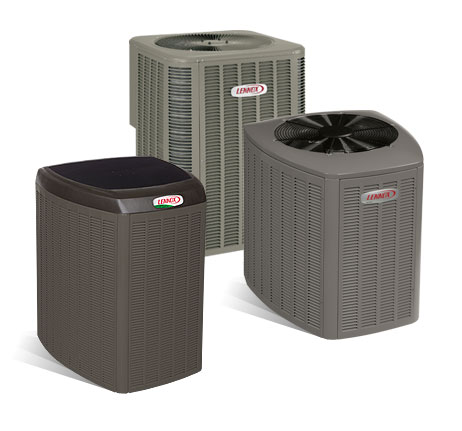
Ducted heat pumps come in various types and configurations to cater to homeowners’ specific needs and preferences. The choice of the right type largely depends on factors like climate, budget, and the size and layout of your home. Let’s explore some common types of ducted heat pumps:
Air-Source Heat Pumps (ASHP):
Standard Air-Source Heat Pump: These are the most common type of ducted heat pumps.
During winter, they draw heat from the outdoor air; in the summer, they expel heat outdoors to provide cooling. They perform effectively in regions with moderate climates.
Cold Climate Air-Source Heat Pump: Designed for regions with harsh winters, these heat pumps are optimized to operate efficiently even when outdoor temperatures drop significantly below freezing. They ensure reliable heating in colder climates.
Ground-Source Heat Pumps (GSHP):
Geothermal Heat Pumps: These systems use the relatively stable temperatures of the ground or water sources, such as underground wells or ponds, for heat exchange.
Geothermal heat pumps offer remarkable efficiency, leading to substantial energy bill reductions, though the initial installation expenses are typically higher.
Hybrid Heat Pumps:
Dual-Fuel Heat Pumps: Also known as hybrid heat pumps, these systems combine a heat pump with a backup heating source, usually a furnace. They automatically switch between the two based on outdoor temperatures to maximize efficiency and cost savings.
Mini-Split Ducted Heat Pumps:
· Ducted Mini-Split Systems: These systems combine the benefits of central ducted heating and cooling with the flexibility and zoning advantages of mini-split systems. They use small, compact indoor air handlers connected to a central outdoor unit, offering efficient and customizable climate control.
Variable-Speed Heat Pumps:
· Variable-Speed Compressor Heat Pumps: These heat pumps feature variable-speed compressors that can precisely adjust their capacity to match the heating or cooling needs. This results in better comfort, energy efficiency, and quieter operation.
Multi-Zone Ducted Heat Pumps:
· Multi-Zone Systems: Ideal for larger homes or spaces with varying temperature needs, multi-zone ducted heat pumps allow for independent temperature control in different zones or rooms. This zoning capability enhances comfort and energy efficiency.
Smart Heat Pumps:
· Smart and Wi-Fi-Enabled Systems: Many modern ducted heat pumps have intelligent features and Wi-Fi connectivity. These systems can be controlled remotely through smartphone apps, allowing you to adjust settings and monitor energy usage from anywhere.
Ducted Heat Pumps Price in Canada

The cost of ducted heat pumps in Canada can vary significantly based on several factors, including the size of your home, the type and brand of heat pump you choose, the complexity of the installation, and your location within Canada. Additionally, prices may have changed since my knowledge cutoff date in September 2021. Here are some general cost considerations:
1. Initial Equipment Cost: The ducted heat pump cost is a significant portion of the overall expense. Basic ducted heat pump systems can start at around $5,000 to $7,000, but more advanced and efficient models can cost upwards of $10,000 or more.
2. Installation Costs: Installation costs can vary widely based on the complexity of the installation, including factors like the size and layout of your home, the need for ductwork modifications, and the location of the outdoor unit. Installation costs may range from $2,000 to $5,000 or more.
3. Additional Components: Depending on your specific requirements, you may need zoning systems, smart thermostats, or air purification systems, which can add to the total cost.
4. Geographic Variation: The cost of heat pumps can vary by region. For example, installation costs may be higher in remote or less densely populated areas due to increased travel time and materials transportation expenses.
5. Efficiency and Features: Heat pumps with greater efficiency or advanced features often come with a higher initial investment but can lead to substantial long-term energy savings.
6. Maintenance and Operating Costs: While not part of the initial purchase price, it’s essential to consider ongoing maintenance and operating costs, including regular servicing and electricity expenses.
7. Rebates and Incentives: In Canada, government rebates and incentives are often available for installing energy-efficient heating and cooling systems, including heat pumps. These incentives can offset the initial cost.
To get an accurate estimate for the installation of a ducted heat pump in your specific location and circumstances, it’s recommended that you contact local HVAC contractors for quotes.
Ducted Heat Pumps Installation Process
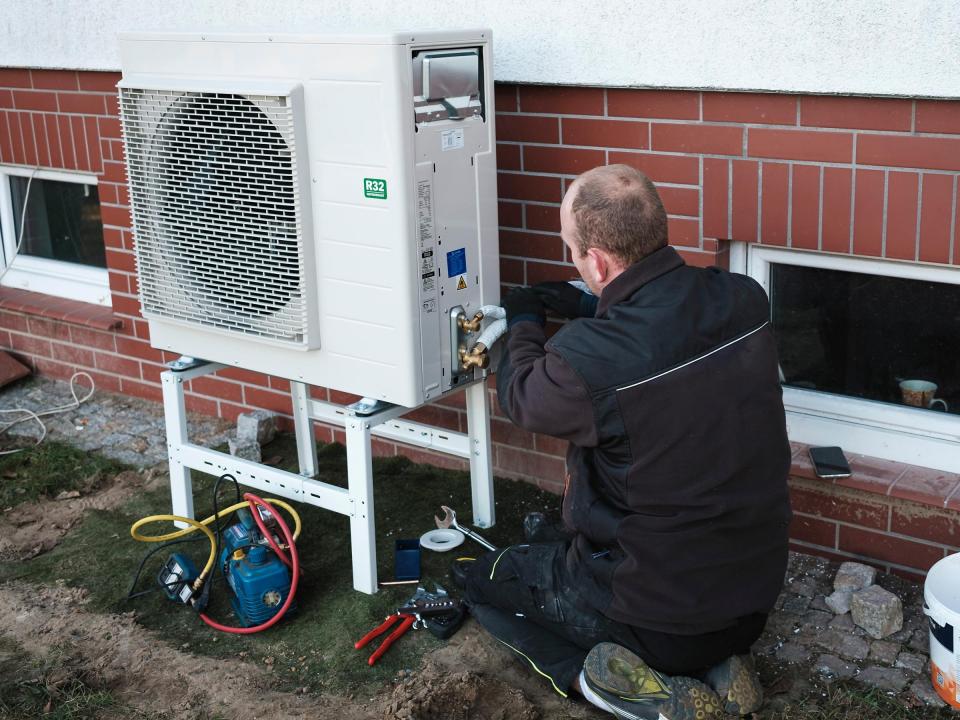
Installing ducted heat pumps is a complex process that should be carried out by trained and certified HVAC (Heating, Ventilation, and Air Conditioning) installation professionals. Here’s an overview of the typical installation process for ducted heat pumps:
Initial Assessment and Planning:
HVAC professionals visit your home to assess your heating and cooling needs, the layout of your home, and your existing HVAC system (if applicable).
They will evaluate accessibility, airflow considerations, and zoning requirements to identify the most suitable positions for both the outdoor unit (condenser) and the indoor unit (evaporator).
Sizing calculations are carried out to ascertain the suitable capacity of the heat pump, ensuring that it effectively heats and cools your home.
Ductwork Inspection and Modification:
If your home has existing ductwork, it will be inspected for leaks, damage, and compatibility with the new heat pump system.
Any necessary repairs or modifications to the ductwork are made to ensure optimal airflow and distribution of conditioned air.
Equipment Installation:
The outdoor unit (condenser) is installed outside your home, typically on a concrete pad or a sturdy surface. It’s connected to the indoor unit via refrigerant lines and electrical wiring.
The indoor unit (evaporator) is installed in a central location, often in the basement, attic, or utility room. It’s connected to the ductwork system and the thermostat.
Refrigerant lines and electrical wiring are carefully routed and connected between the indoor and outdoor units.
Air Distribution System Setup:
The ductwork system is connected to the indoor unit, ensuring proper sealing to prevent air leaks.
If zoning is required, dampers and control mechanisms are installed within the ductwork to control the flow of conditioned air to different zones or rooms.
Electrical and Control Wiring:
Electrical wiring, including power and control wires, are connected to the indoor and outdoor units.
The thermostat and control wiring are installed, allowing you to regulate the temperature and settings.
Refrigerant Charge and Testing:
Refrigerant is carefully charged into the system, following manufacturer specifications.
The system is tested for leaks and adequately pressurized to ensure optimal performance and efficiency.
Startup and Calibration:
HVAC technicians start up the system and calibrate it to ensure it delivers the desired heating and cooling performance.
They also set up any smart thermostats or controls, if applicable.
Air Balancing and Testing:
Technicians perform air balancing tests to guarantee that conditioned air is uniformly distributed throughout your home.
They verify that the system achieves the specified temperature differentials and airflows.
Customer Orientation:
HVAC professionals provide information on using and maintaining your new ducted heat pump system.
They answer any questions and guide filter replacement, system maintenance, and troubleshooting common issues.
Final Inspection and Documentation:
A final inspection might be carried out to verify that the installation complies with all local building codes and safety standards.
You’ll receive documentation, including warranty information, for your new heat pump system.



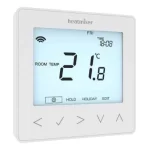
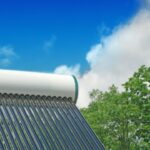
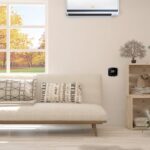
One Comment
Posted by: Ductless Heat Pumps - Everything to Know | Diako Air
October 31, 2023[…] heat pumps offer precise temperature control without the need for conventional ductwork (unlike ducted heat pumps), making them exceptionally efficient heating, ventilation, and air conditioning (HVAC) […]